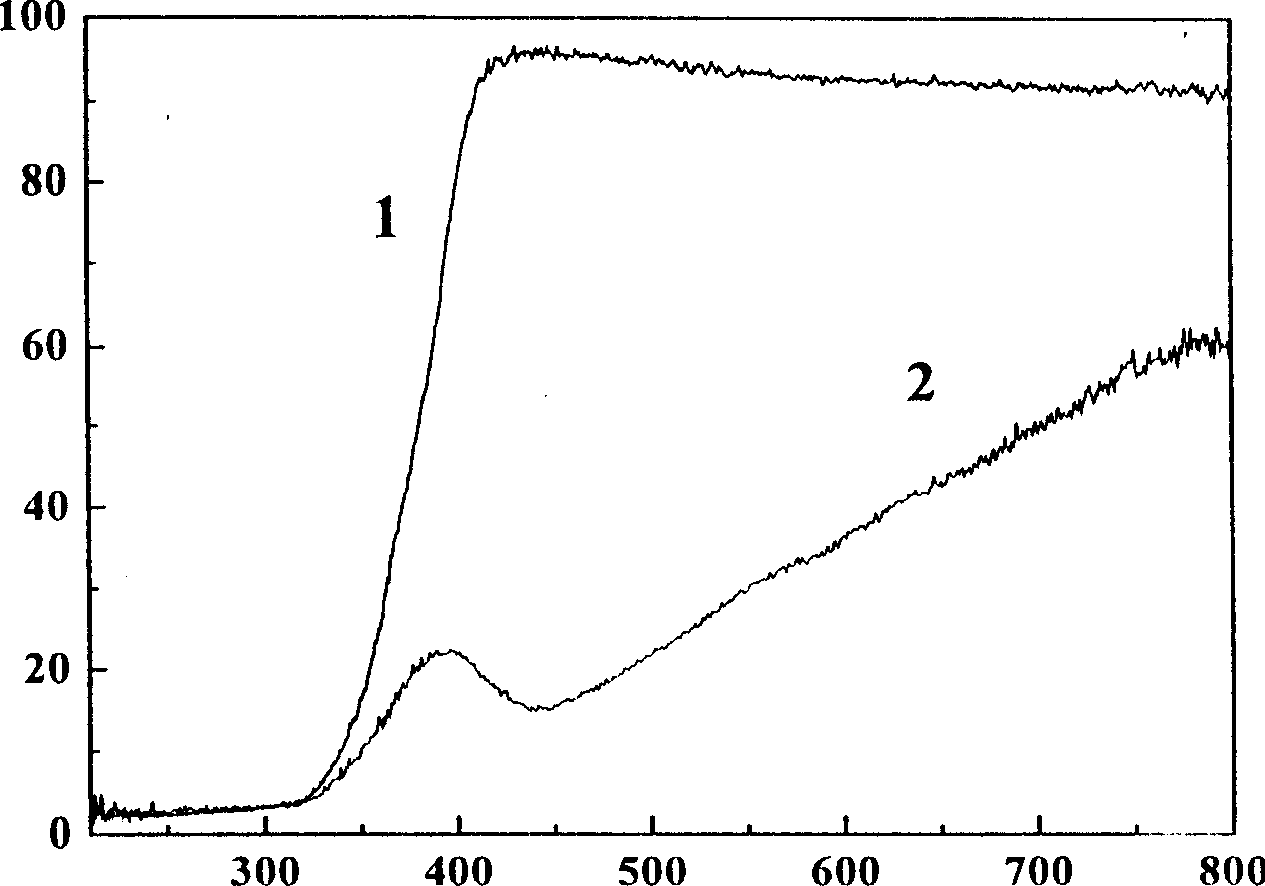Artificial anitibody type composite photocatalyst and its prepn. method
A catalyst and recombination light technology, which is applied in chemical instruments and methods, organic compound/hydride/coordination complex catalysts, physical/chemical process catalysts, etc., can solve the problem of low sunlight utilization ratio and high carrier recombination probability , low quantum efficiency and other issues, to achieve the effect of broadening the absorption wavelength range, wide pH range, and simple preparation process
- Summary
- Abstract
- Description
- Claims
- Application Information
AI Technical Summary
Problems solved by technology
Method used
Image
Examples
example 1
[0039] Example 1: In a 100mL beaker, add 0.2mol monomeric o-phenylenediamine and 5×10 -4 mol of 4-chlorophenol, then added 30 mL of distilled water, and stirred at 65°C for 30 min. Add 2g TiO to the beaker 2 , ultrasonically disperse for 15 minutes to make a suspension, adjust the pH of the solution to 2.3, control the temperature of the solution to 65° C., and stir for 6 hours. Suction filter the modified nanoparticles, and use 0.025mol / L Na 2 CO 3 The nanoparticles were washed 5 times with aqueous solution and then 5 times with distilled water. The nanoparticles were dried at 86 °C for 2 h and ground with a mortar to obtain a poly-o-phenylenediamine / TiO with specific selectivity for 4-chlorophenol 2 Powdered artificial antibody type composite photocatalyst.
example 2
[0040] Example 2: Add 0.3mol monomeric aniline and 3×10 to a 100mL beaker -5 mol of 4-nitrophenol, then added 40 mL of distilled water, and stirred at 25°C for 30 min. Add 1.8g TiO to the beaker 2 , ultrasonically disperse for 10 min to make a suspension, adjust the pH value of the solution to 5, control the temperature of the solution to 30° C., and stir for 10 h. Suction filter the modified nanoparticles, and use 0.025mol / L Na 2 CO 3 The nanoparticles were washed 5 times with aqueous solution and then 5 times with distilled water. The nanoparticles were dried at 86 °C for 2 h and ground with a mortar to obtain a polyaniline / TiO with specific selectivity for 4-nitrophenol 2 Powdered artificial antibody type composite photocatalyst.
example 3
[0041] Example 3: In a 100mL beaker, add 0.25mol monomeric o-phenylenediamine and 0.05mol monomeric pyrrole and 5×10 -3 mol of 2,6-dichlorophenol, and then 50 mL of distilled water was added, and the reaction was stirred at 35°C for 30 min. Add 1.5g TiO to the beaker 2 , ultrasonically disperse for 10 min to make a suspension, adjust the pH value of the solution to 5.5, control the temperature of the solution to 70° C., and stir for 48 h. Suction filter the nanoparticles and use 0.025mol / L Na 2 CO 3 The nanoparticles were washed 5 times with aqueous solution and then 5 times with distilled water. The nanoparticles were dried at 86°C for 2 h and ground with a mortar to obtain an o-phenylenediamine, pyrrole copolymer / TiO with specific selectivity for 2,6-dichlorophenol 2 Powdered artificial antibody type composite photocatalyst.
PUM
| Property | Measurement | Unit |
|---|---|---|
| particle diameter | aaaaa | aaaaa |
Abstract
Description
Claims
Application Information
 Login to View More
Login to View More - R&D
- Intellectual Property
- Life Sciences
- Materials
- Tech Scout
- Unparalleled Data Quality
- Higher Quality Content
- 60% Fewer Hallucinations
Browse by: Latest US Patents, China's latest patents, Technical Efficacy Thesaurus, Application Domain, Technology Topic, Popular Technical Reports.
© 2025 PatSnap. All rights reserved.Legal|Privacy policy|Modern Slavery Act Transparency Statement|Sitemap|About US| Contact US: help@patsnap.com



